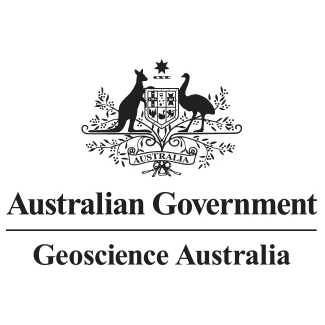Full description
This record was retired 29/03/2022 with approval from S.Oliver as it has been superseded by eCat 146261 DEA Geometric Median and Median Absolute Deviation (Landsat)
The surface reflectance geometric median (geomedian) is a pixel composite mosaic of a time series of earth observations. Essentially the value of apixel in a geomedian image is the statistical median of all observations for that pixel from a period of time. An annual geometric median is a high-dimensional median calculated from the reflectance values drawn from a calendar year. The years available are each full calendar year since 1988. The annual geometric medians of surface reflectance measurements are calculated per calendar year, on individual sensors (ie. only Landsat 5 TM or Landsat 7 ETM+ or Landsat 8 OLI).
Lineage
Maintenance and Update Frequency: asNeeded
Statement: Large-scale image composites are increasingly important for a variety of applications such as land cover mapping, change detection, and the generation of high-quality data to parameterise and validate bio-physical and geophysical models. Anumber of compositing methodologies are being used in remote sensing in general,howeverchallenges such as maintaining the spectral relationship between bands, mitigating against boundary artifacts due to mosaicking scenes from different epochs, and ensuring spatial regularity across the mosaic image still exist.
The creation of good composite images is a particularly important technology since the opening of the Landsat archive by the United States Geological Survey. The greater availability of satellite imagery has resulted in demand to provide large regional mosaics that are representative of conditions over specific time periods while also being free of clouds and other unwanted image noise. One approach is the stitching together of a number of clear images. Another is the creation of mosaics where pixels from different epochs are combined based on some algorithm from a time series of observations. This ‘pixel composite’ approach to mosaic generation provides a more consistent result compared with stitching clear images due to the improved color balance created by the combining of one-by-one pixel representative images. Another strength of pixel-based composites is their ability to be automated for application to very large data collections and time series such as national satellite data archives.
The geomedian provides an approach that leverages high-dimensional statistical theory to deliver a spectrally consistent, artefact-free pixel composite product.
The geomedian is derived from Landsat NBAR surface reflectance data (eg SR-N_25_2.0.0 or SR-NT_25_2.0.0), and hence consists of surface reflectance data. The data are masked for cloud, shadows and other image artefacts using the pixel quality product (PQ_25_2.0.0) to help provide as clear a set of observations as possible from which to calculate the geomedian. The algorithm used to create the geomedian composites is given in Roberts et al (2017).
Note:the constituent pixels in the geomedian pixel composite mosaics are synthetic, meaning that the pixels have not been physically observed by the satellite. Rather they are the computed high-dimensional median of a time series of pixels.
basic_htmlLarge-scale image composites are increasingly important for a variety of applications such as land cover mapping, change detection, and the generation of high-quality data to parameterise and validate bio-physical and geophysical models. A number of compositing methodologies are being used in remote sensing in general, however challenges such as maintaining the spectral relationship between bands, mitigating against boundary artifacts due to mosaicking scenes from different epochs, and ensuring spatial regularity across the mosaic image still exist.
The creation of good composite images is a particularly important technology since the opening of the Landsat archive by the United States Geological Survey. The greater availability of satellite imagery has resulted in demand to provide large regional mosaics that are representative of conditions over specific time periods while also being free of clouds and other unwanted image noise. One approach is the stitching together of a number of clear images. Another is the creation of mosaics where pixels from different epochs are combined based on some algorithm from a time series of observations. This ‘pixel composite’ approach to mosaic generation provides a more consistent result compared with stitching clear images due to the improved color balance created by the combining of one-by-one pixel representative images. Another strength of pixel-based composites is their ability to be automated for application to very large data collections and time series such as national satellite data archives.
The geomedian provides an approach that leverages high-dimensional statistical theory to deliver a spectrally consistent, artefact-free pixel composite product.
The geomedian is derived from Landsat NBAR surface reflectance data (eg SR-N_25_2.0.0 or SR-NT_25_2.0.0), and hence consists of surface reflectance data. The data are masked for cloud, shadows and other image artefacts using the pixel quality product (PQ_25_2.0.0) to help provide as clear a set of observations as possible from which to calculate the geomedian. The algorithm used to create the geomedian composites is given in Roberts et al (2017).
Note: the constituent pixels in the geomedian pixel composite mosaics are synthetic, meaning that the pixels have not been physically observed by the satellite. Rather they are the computed high-dimensional median of a time series of pixels.




